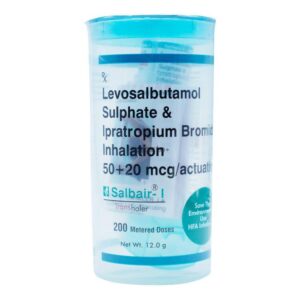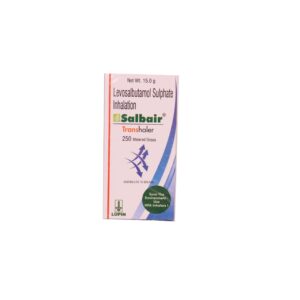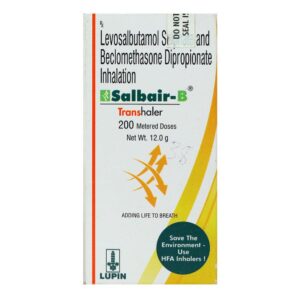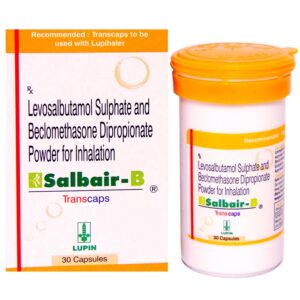SALBUTAMOL + FORMOTEROL
Salbutamol: Salbutamol, also known as albuterol, is a medication commonly used to alleviate symptoms of asthma and chronic obstructive pulmonary disease (COPD). It belongs to a class of drugs called beta-2 adrenergic agonists or bronchodilators.
Salbutamol works by stimulating beta-2 adrenergic receptors in the smooth muscles of the airways. This stimulation causes relaxation of the muscles, leading to bronchodilation and improved airflow to the lungs. It also reduces inflammation and mucus production in the airways, which helps to relieve symptoms such as wheezing, coughing, shortness of breath, and chest tightness.
The typical recommended dose of salbutamol depends on the individual and the severity of their condition. It is commonly administered via inhalation using a metered-dose inhaler (MDI) or a nebulizer. The usual starting dose for adults is 1-2 puffs or inhalations every 4-6 hours as needed. However, the dose may vary, and it is important to follow the instructions provided by your healthcare provider.
Some common side effects of salbutamol include nervousness, tremor, headache, dizziness, increased heart rate (tachycardia), palpitations, and muscle cramps. These side effects are usually mild and temporary. However, if they persist or worsen, it is important to consult your doctor.
In rare cases, salbutamol may cause more serious side effects, such as chest pain, irregular heartbeat, allergic reactions (rash, itching, swelling), difficulty breathing, or changes in blood pressure. If you experience any of these severe side effects, seek immediate medical attention.
It is important to note that salbutamol is not a cure for asthma or COPD. It is primarily used as a rescue medication to provide quick relief during acute episodes or to prevent exercise-induced bronchospasm. Long-term management of asthma and COPD usually involves the use of other medications, such as inhaled corticosteroids.
As with any medication, it is crucial to use salbutamol as prescribed by a healthcare professional and to discuss any potential concerns or side effects with your doctor.
Formoterol: Formoterol is a medication used as a bronchodilator to treat asthma and chronic obstructive pulmonary disease (COPD). It belongs to the class of drugs known as long-acting beta2-agonists (LABAs).
The primary mechanism of action of formoterol is its ability to stimulate beta2-adrenergic receptors in the airway smooth muscles, leading to relaxation and bronchodilation. This helps to improve breathing by opening up the airways and allowing better airflow.
Formoterol is available in different forms, including inhalation powder and inhalation solution. The specific dose and frequency of use will depend on the formulation and the individual’s condition. It should always be used as prescribed by a healthcare professional.
Common side effects of formoterol include headache, trembling or shakiness, dizziness, muscle cramps, and increased heart rate. These side effects are generally mild and temporary. However, more serious side effects, though rare, can occur, including chest pain, irregular heartbeat, or allergic reactions. If any severe side effect is experienced, medical attention should be sought immediately.
It is worth noting that formoterol should not be used as a rescue medication for sudden breathing difficulties or acute asthma attacks. Short-acting bronchodilators, such as salbutamol, are more appropriate for immediate relief in these situations.
As with any medication, it is important to discuss potential risks and benefits with a healthcare professional before starting formoterol therapy, especially for individuals with certain medical conditions or taking other medications that may interact with it.




